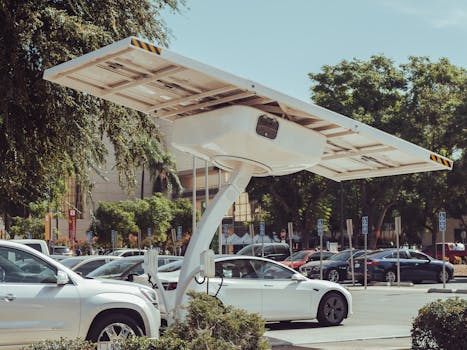Charging Infrastructure Is Shaping Global EV Adoption
Electric vehicles (EVs) are quickly gaining popularity as the world moves towards a greener and more sustainable future. With the rise in awareness about climate change and the urgent need to reduce carbon emissions, governments and automakers around the globe are shifting their focus towards EVs and their adoption. But, as more and more consumers choose to make the switch, there is a growing concern about the infrastructure needed to support this transition. This is where charging infrastructure comes into play.
What is Charging Infrastructure?
Charging infrastructure refers to the network of charging stations that are required to power up electric vehicles. These stations come in different shapes and sizes, ranging from standard home chargers to high-powered fast-charging stations found on highways and public places. Just like traditional gas stations for gasoline-powered cars, charging infrastructure plays a crucial role in the mass adoption of electric vehicles.
The Shifting Landscape of Global EV Adoption
The uptake of EVs has been on a steady rise in recent years. In 2020, despite the challenges posed by the COVID-19 pandemic, global EV sales surpassed 3 million, an impressive 41% increase from the year before. With the world’s leading automakers like Tesla, Volkswagen, and General Motors committing to an all-electric future, the shift from traditional gas-powered cars to EVs seems inevitable. However, for EVs to truly take over, the charging infrastructure needs to be developed in parallel.
Government Initiatives
Governments around the world are playing a crucial role in shaping the global EV adoption by providing incentives and subsidies to both consumers and manufacturers. In the USA, the federal government offers a tax credit of up to $7,500 for the purchase of an EV, making it a more affordable option for consumers. China, the largest market for EVs, has set ambitious targets of 20% of new car sales to be electric or hybrid by 2025. Other countries like Norway, France, and the UK have also implemented similar policies to promote EV adoption.
Automakers’ Initiatives
Major automakers are also heavily investing in EVs, and with that, charging infrastructure. For instance, Volkswagen has committed to invest $86 billion in electric and self-driving cars, including building a network of charging stations across Europe and the USA. Tesla, the market leader in EVs, has an extensive network of fast-charging stations, known as Tesla Superchargers, strategically placed along highways and major routes for long-distance travel. These initiatives by automakers are vital in easing range anxiety, a major concern for consumers considering the switch to EVs.
Private Investors and Startups
With the increasing demand for charging infrastructure, venture capitalists and startups are also jumping into the game. Companies like ChargePoint, EVBox, and Fastned have established their footprint in the charging infrastructure market and are continuously expanding to meet the growing demand. Private investors are also showing interest in funding projects related to EV charging infrastructure, further fueling its development and growth.
The Impact of Charging Infrastructure on Global EV Adoption
The presence of sufficient and accessible charging infrastructure is a major factor in driving the mass adoption of EVs. Without proper infrastructure, the fear of running out of charge and getting stranded on the road remains a significant barrier for consumers. But, with a developed network of charging stations, this barrier is significantly reduced, making EVs a more viable option for the general public.
Moreover, with the switch to renewable energy sources for charging stations, EVs become even more appealing as they contribute to a cleaner and greener environment. This adds to the overall impact of EVs in fighting climate change and reducing carbon emissions.
The Road Ahead
As the world makes a shift towards sustainable transportation, the need for charging infrastructure will only increase. It is critical for governments, automakers, and private investors to continue investing in the development and expansion of charging infrastructure to sustain the growth of EV adoption. With the advancements in technology, we can also expect to see more efficient and faster charging solutions in the future, making EVs an even more convenient and viable option for all.
In conclusion, charging infrastructure is a crucial element in shaping the global EV adoption. With the right investments and initiatives from all stakeholders, we can pave the way for a cleaner and more sustainable mode of transportation for generations to come.








